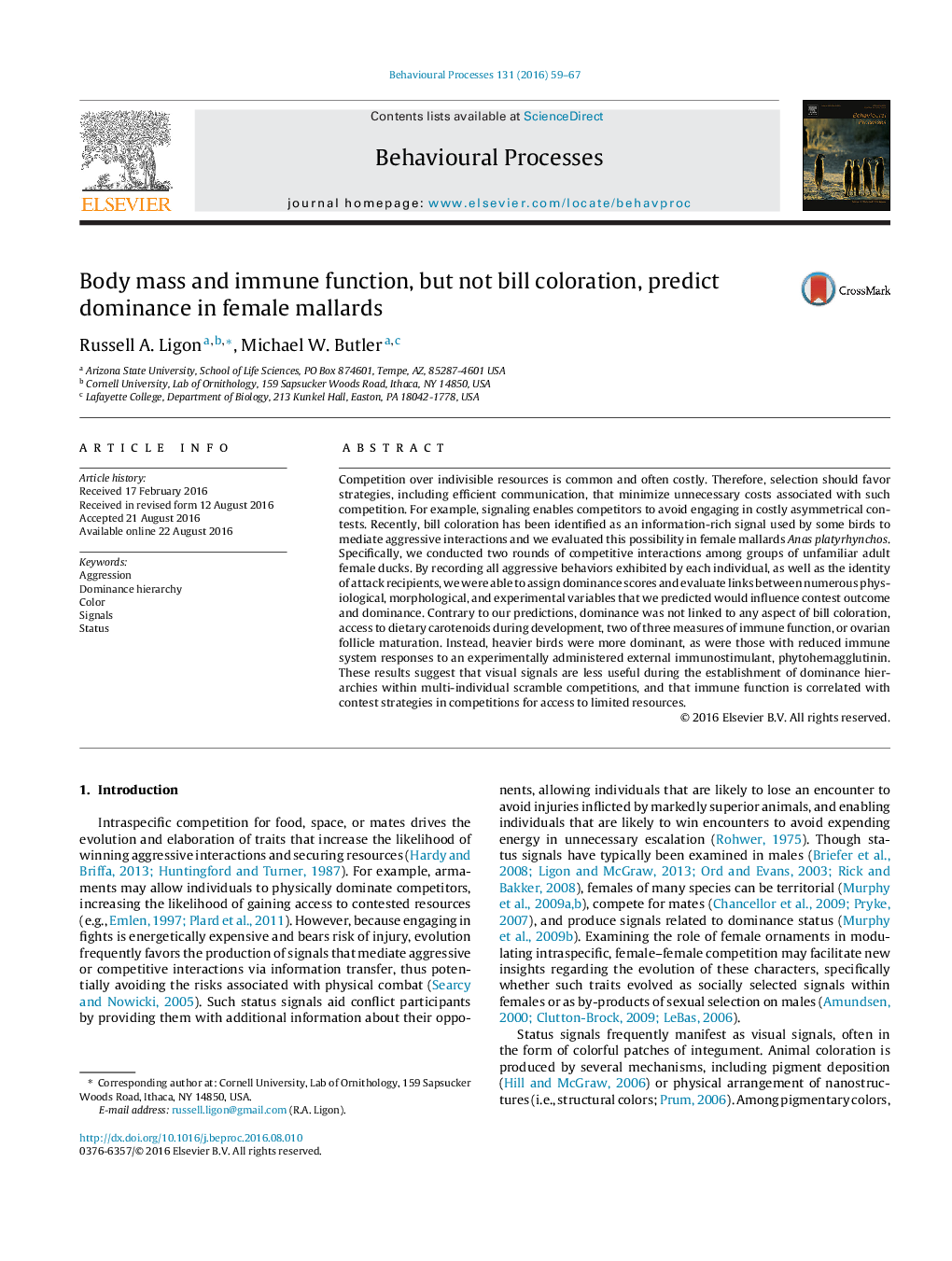| Article ID | Journal | Published Year | Pages | File Type |
|---|---|---|---|---|
| 2426370 | Behavioural Processes | 2016 | 9 Pages |
•Animals use signals, including colorful ornaments, to minimize costs of competition.•Most studies have focused on factors linked to male dominance and success.•We analyzed the factors linked to aggression and dominance in female mallards.•In competitive interactions among multiple females, dominance was positively linked to body mass and negatively linked to one aspect of immune system response.•Bill coloration does not appear to be used by female mallards in group/scramble competition.
Competition over indivisible resources is common and often costly. Therefore, selection should favor strategies, including efficient communication, that minimize unnecessary costs associated with such competition. For example, signaling enables competitors to avoid engaging in costly asymmetrical contests. Recently, bill coloration has been identified as an information-rich signal used by some birds to mediate aggressive interactions and we evaluated this possibility in female mallards Anas platyrhynchos. Specifically, we conducted two rounds of competitive interactions among groups of unfamiliar adult female ducks. By recording all aggressive behaviors exhibited by each individual, as well as the identity of attack recipients, we were able to assign dominance scores and evaluate links between numerous physiological, morphological, and experimental variables that we predicted would influence contest outcome and dominance. Contrary to our predictions, dominance was not linked to any aspect of bill coloration, access to dietary carotenoids during development, two of three measures of immune function, or ovarian follicle maturation. Instead, heavier birds were more dominant, as were those with reduced immune system responses to an experimentally administered external immunostimulant, phytohemagglutinin. These results suggest that visual signals are less useful during the establishment of dominance hierarchies within multi-individual scramble competitions, and that immune function is correlated with contest strategies in competitions for access to limited resources.
Graphical abstractFigure optionsDownload full-size imageDownload as PowerPoint slide
